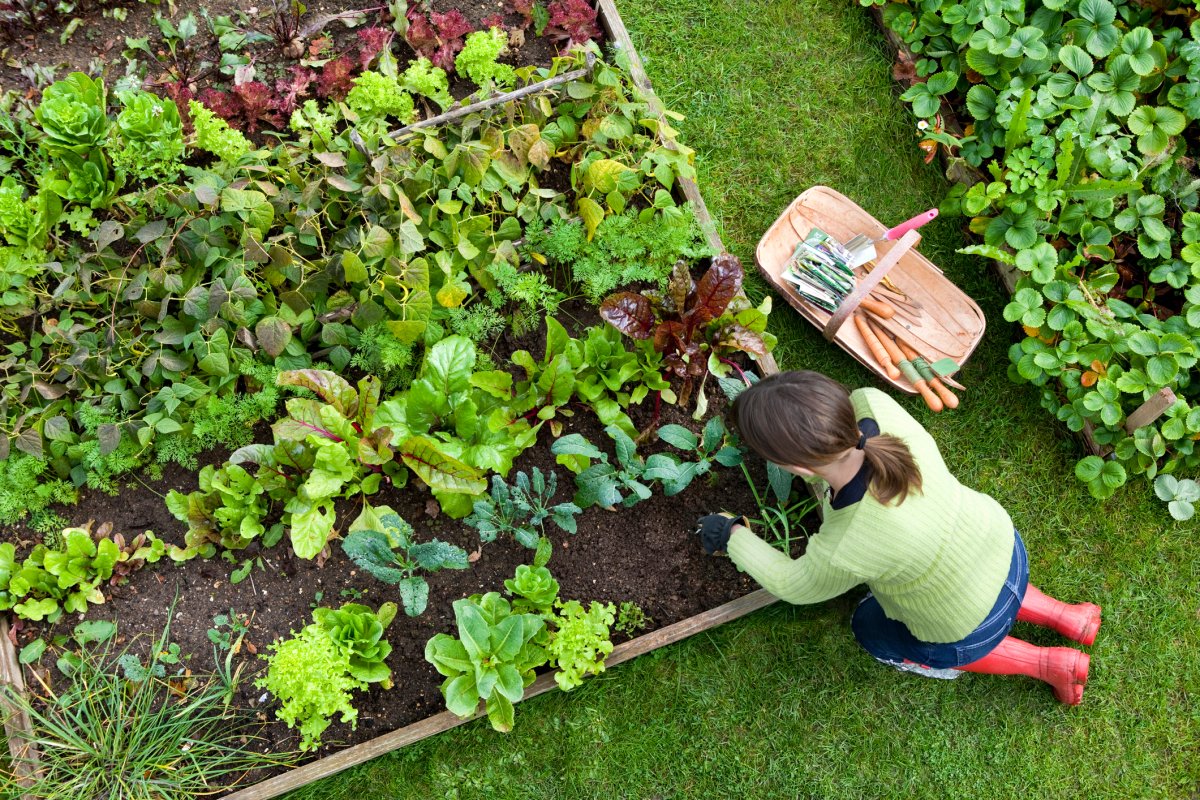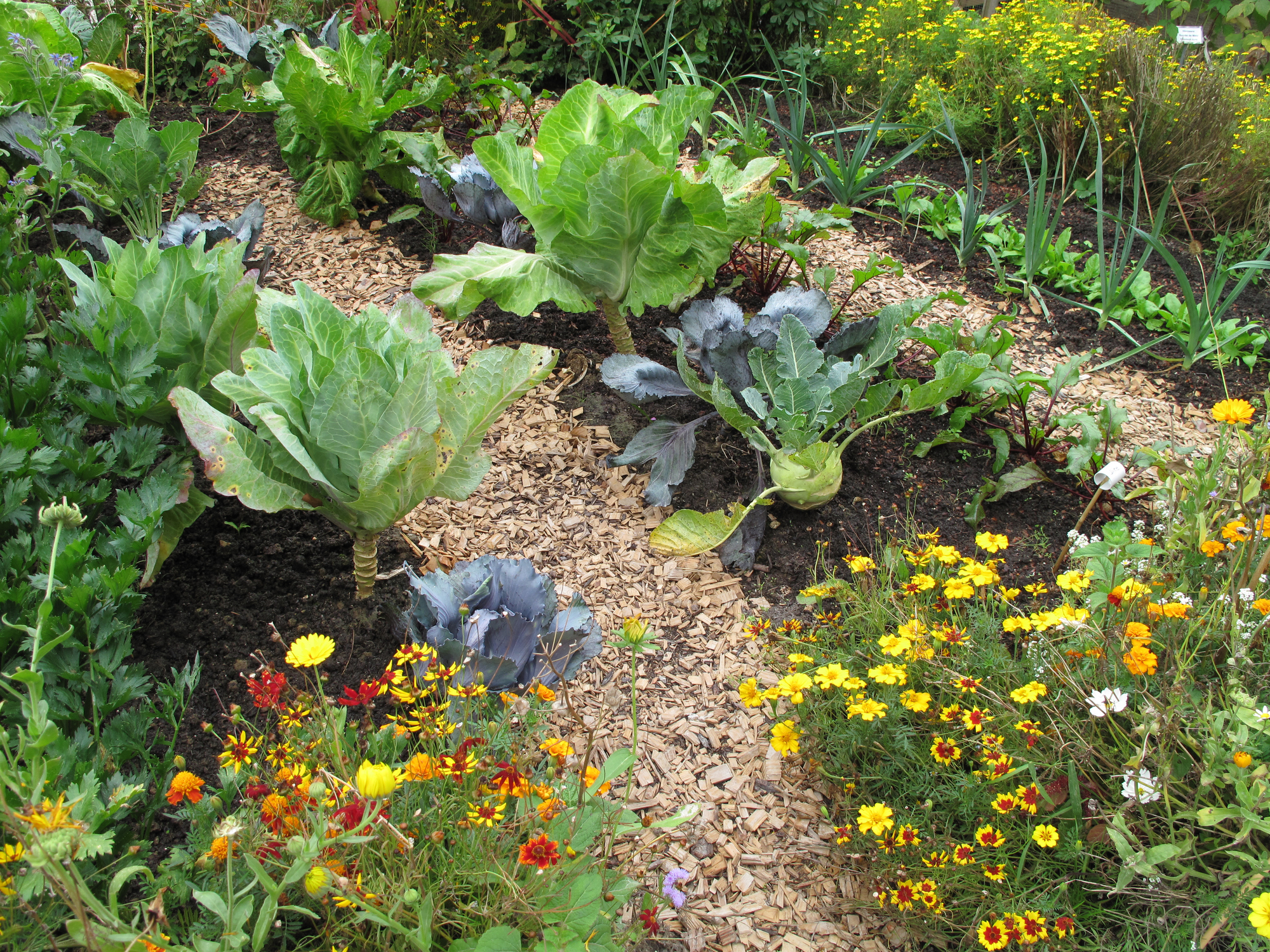

We may earn revenue from the products available on this page and participate in affiliate programs. Learn More ›
No matter the season, companion planting can help your garden thrive. This popular strategy involves growing certain plants together that mutually benefit one another. Some plants can provide shade for other plants that need it, and other plants help keep away pests so nearby plants can thrive.
One of the most well-known examples of companion planting is a three sisters garden, which consists of corn, beans, and squash. Companion planting isn’t just about planting certain crops next to each other, however. “It’s about understanding how they interact in the soil beneath and the air above,” says Matthew Wilson, professional gardener, horticulturist, and CEO of Handy Gardeners in the United Kingdom. “By taking root behavior, chemical interactions, and timing into account, you can design a companion planting plan that’s positively dangerous to pests, and extremely satisfying for the gardener.”
We spoke with Wilson and several gardening experts to find out some common companion planting mistakes to avoid, as well as tips for doing it successfully to ensure you have the most flourishing garden possible.
1. Overcrowding Plants
A common mistake gardeners make is cramming too many plants into a small space with no consideration for scale. Some place too many companion plants into a small space, assuming that more diversity is better, says Samuel Davis, a horticulturist and the CEO of London Gardeners in the United Kingdom. “But the density of plants can also prompt competition for nutrients, hinder growth, and create a habitat for the spread of disease,” says Davis.
One classic example is the mistake of planting ground-hugging species like pumpkins alongside upright crops like corn. “The pumpkin vines take over and don’t allow air flow, which causes things to rot and pests to move in,” notes Davis. “The art of companion planting success is not just in what you grow together, but how you grow together.”
Davis encourages clients to layer heights and spaces intentionally when designing a garden. Before planting, always anticipate the fully mature size of each plant, including the width and height, and how fast it typically grows. You can find this information on the seed packet or tag at the nursery.

2. Ignoring Soil, Water, and Light Needs
Another common mistake with companion planting is ignoring the soil, water, and sunlight needs of each plant. “Pay attention to growth habits so taller plants don’t shade out smaller ones,” warns Sara Rubens, certified garden coach and founder of Seed to Sanctuary. “Also, avoid mixing plants with different water needs,” says Rubens. For example, melons need lots of water while rosemary plants like it drier. It’s also helpful to research the soil preferences (pH, drainage, organic matter, and texture) of each species ahead of time.
The most successful companion plantings feature plants with complementary rather than competing needs. Pair shallow-rooted vegetables with deep-rooted varieties to utilize different soil layers or strategically position taller plants to provide afternoon shade for heat-sensitive companions while still allowing both adequate sunlight. Likewise, choose only cool-season plants for fall companion planting.
3. Not Understanding Plants’ Role in Pest Management
Another problem is ignoring how some plants deter pests while others attract beneficial insects, says Anastasia Borisevich, plant expert at Plantum, an app that helps identify plants and improve plant care. “If you sow dill or fennel, they may attract greenfly predators, and when you grow carrots and leeks together, both should drive away the pests of the other.” She also points out that plant scent can play a role in pest control and should be considered when choosing companion plants. “By planting onion or garlic next to a more vulnerable plant, you can keep pests at bay and have two additional harvests.”
There is even the concept of sacrificing a plant to help another. “Some plants can be more attractive to pests over the ones you’re growing, so they can serve as ‘sacrificial crops’ to draw attention away from the main plantation,” says Borisevich. For example, plant alfalfa if you have a Lygus bug problem.
It’s best to avoid planting crops next to each other that are susceptible to the same pests and diseases, since this can increase the likelihood that pests will attack both. Stagger plants from the same family that might attract the same pests and place plants known to deter specific pests between those plants. Avoid planting the following together: tomatoes and potatoes, strawberries and Brussels sprouts, kale and cabbage, and peppers and eggplant. Another tip is to plant flowers in the vegetable garden to help keep pests away, such as marigolds, calendula, and nasturtium, rather than relying solely on edible plants as companions.

4. Ignoring Plant Incompatibility
Some plants are simply not compatible, so it’s important to do the research before expecting positive results based on myths. “Most gardeners still use anecdotal pairings, like planting tomatoes with basil, without thinking about what plants might really want in a botanical soulmate,” says Davis. Tomatoes and fennel are a common mispairing, for example, since fennel can stunt the growth of tomato plants.
One reason for incompatibility among plants is a natural phenomenon known as allelopathy, in which certain flowers and vegetables release growth-inhibiting chemicals into the soil. In essence, one plant can inhibit the growth of another plant with this chemical. Therefore, you want to avoid planting allelopathic plants together, as these are not successful companions. Allelopathic garden plants include brassicas and mustards, fennel, sunflowers, and buckwheat. Some pairings to stay away from due to allelopathic characteristics include beans and onions, mint and asparagus, potatoes and sunflowers, and fennel with anything.
5. Neglecting Root Compatibility
People often forget to consider plants’ root systems when choosing companion plants. You want to avoid placing plants together that have competing root systems because that can suppress their growth. Placing plants next to each other that have roots at a similar depth could result in one plant taking too many of the nutrients so the other plant can’t get what it needs to grow.
“Plants also compete underground as well as above,” explains Wilson. “Combining plants with deep and shallow roots is a good idea, but if aggressive root systems grow side by side, they can fatally stunt growth.” Planting tomatoes too close to potatoes, for example, may result in root crowding and disease.
To prevent this from happening, place plants with different types of root systems next to each other so they uptake water and nutrients from different levels in the soil. Vegetables with long taproots and tubers like potatoes, carrots, and radishes work well with vegetables with shallow roots like onions and corn.
